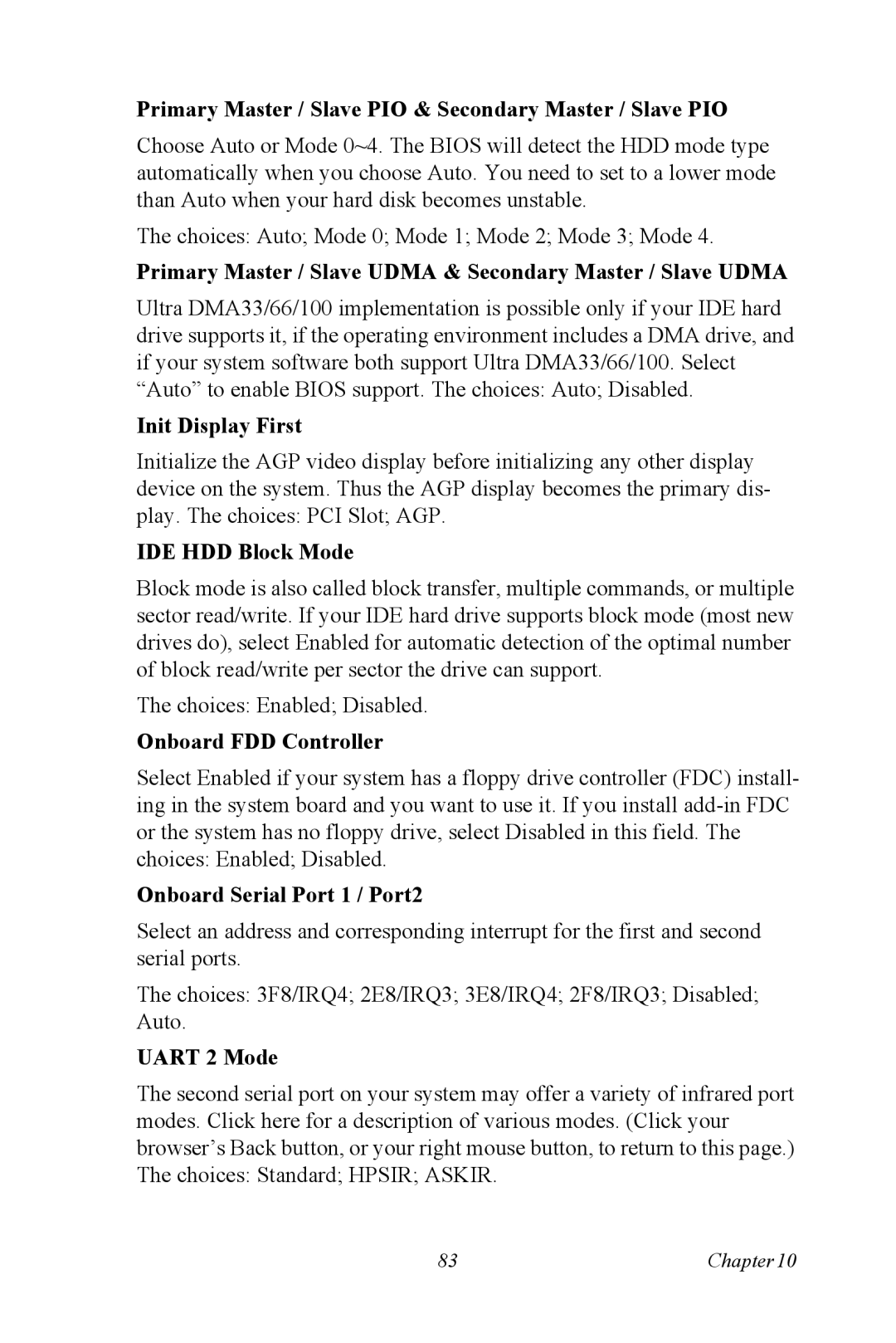Primary Master / Slave PIO & Secondary Master / Slave PIO
Choose Auto or Mode 0~4. The BIOS will detect the HDD mode type automatically when you choose Auto. You need to set to a lower mode than Auto when your hard disk becomes unstable.
The choices: Auto; Mode 0; Mode 1; Mode 2; Mode 3; Mode 4.
Primary Master / Slave UDMA & Secondary Master / Slave UDMA
Ultra DMA33/66/100 implementation is possible only if your IDE hard drive supports it, if the operating environment includes a DMA drive, and if your system software both support Ultra DMA33/66/100. Select “Auto” to enable BIOS support. The choices: Auto; Disabled.
Init Display First
Initialize the AGP video display before initializing any other display device on the system. Thus the AGP display becomes the primary dis- play. The choices: PCI Slot; AGP.
IDE HDD Block Mode
Block mode is also called block transfer, multiple commands, or multiple sector read/write. If your IDE hard drive supports block mode (most new drives do), select Enabled for automatic detection of the optimal number of block read/write per sector the drive can support.
The choices: Enabled; Disabled.
Onboard FDD Controller
Select Enabled if your system has a floppy drive controller (FDC) install- ing in the system board and you want to use it. If you install
Onboard Serial Port 1 / Port2
Select an address and corresponding interrupt for the first and second serial ports.
The choices: 3F8/IRQ4; 2E8/IRQ3; 3E8/IRQ4; 2F8/IRQ3; Disabled; Auto.
UART 2 Mode
The second serial port on your system may offer a variety of infrared port modes. Click here for a description of various modes. (Click your browser’s Back button, or your right mouse button, to return to this page.) The choices: Standard; HPSIR; ASKIR.
83 | Chapter10 |
